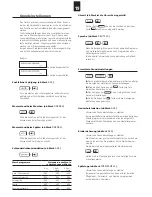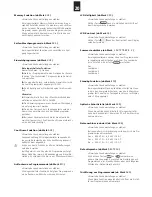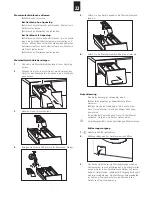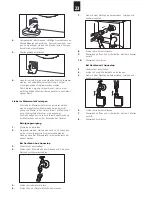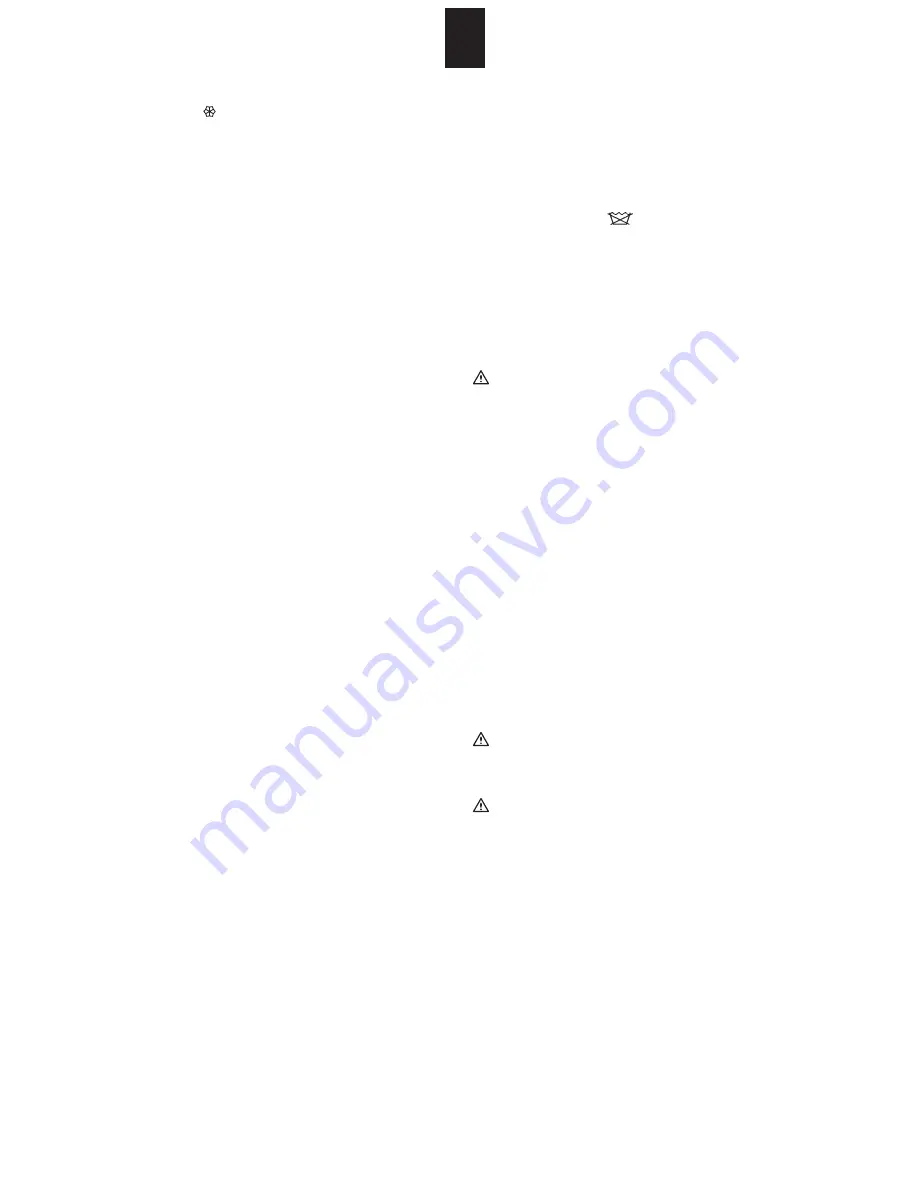
33
Fabric softener, fabric conditioner
Add to section . Do not exceed the max. volume of
200 ml otherwise the fabric conditioner will flow out
through the overflow. Before adding thick fabric softener
add water and stir to ensure that it is free of lumps so
that the siphon does not get blocked.
Bleach, stain removal salt
Powder bleaches and stain removal safts can be also
used for fabrics with bleachable spots. First fill the deter
gent and then the bleach powder or stain removal salt
in section
II
. In this way the agents will be washed in
better.
Impregnating agent
The clothes are impregnated evenly and durably by
adding impregnating agent to the washing machine.
Breathable all-weather clothing such as GoreTex or
SympaTex must only be treated with the specifically
designated impregnating agent. Otherwise you risk
blocking the breathing membranes.
Stain removal
If possible, stains should be removed or at least pretrea-
ted immediately, as long as they are fresh, before washing
the laundry in the washing machine.
Stains which have already dried, in particular in sun light,
are much more difficult to remove, if this is possible at
all. Try water, soap (curd soap) and prewashing agents.
Dab it on, slightly rub it in and let it soak, then rinse the
textile. In this way it is possible to completely or almost
completely remove many typical household stains like
gravy, coffee, chocolate, wine, fat, oil, fruit juices, blood,
etc. Attention: Stains which have not been pre treated
may be fix in the textiles during the wash process.
Then it will be almost impossible to remove them or only
by means of a strong bleaching agent.
It may sometimes be necessary to pretreat, wash or soak
textiles several times in order to remove tenacious and
dried stains.
Washing tips
Sorting the laundry
Follow the care symbols in the fabrics.
Laundry marked with the following care symbol may not
be washed in the machine:
do not wash
Sort the laundry by fabric type and degree of soiling.
Sort the laundry by colour. Wash whites and coloureds
separately, otherwise white laundry will become grey.
Do not wash new coloureds with other laundry due to
the risk of discoloration!
Knitwear made wholly or partly from wool must also be
labelled «non-felting» or «machine washable», otherwise
there is a risk of felting during the washing process.
X
Remove foreign bodies such as safety pins, paper
clips, coins etc from the laundry.
X
Brush out sand from the pockets and turn-ups.
X
Close zips, hooks, eyelets and Velcro closures.
X
Button up duvet covers and pillowcases and tie fabric
belts and apron strings together.
Washing tips
X
Your washing machine will operate most efficiently
and most environmentally friendly if you fill it with the
maximum laundry quantity.
Do not exceed the
maximum loading quantities.
This is because over-
filling detracts from the washing result and may lead to
fabric damage.
X
Wash particularly delicate laundry, such as pantyhose
or net curtains, or small items of laundry such as socks
or handkerchiefs in a net laundry bag or pillowcase.
X
Turn trousers, knitwear or knitted fabrics, e.g. jerseys,
T-shirts, sweatshirts inside out.
X
Check that brassieres are machine washable.
Wash brassieres with stiffeners in a finemesh laundry
bag because of the risk of the wires becoming detached
in the wash and falling through the drum perforations
with resultant damage.
Textiles with metal reinforcements can damage the
components of the machine and must not be washed in
the washing machine.
Dispense with a prewash for normally soiled laundry
and save water, energy, detergent and time.

